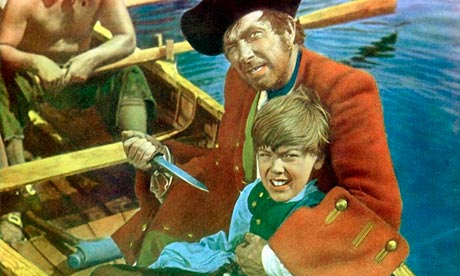
Andrew Motion has form with literary re-imaginings of famous stories. In Wainright the Poisoner (2000) he presented the fictional autobiography of Thomas Wainright, Romantic artist and career criminal. His 2004 novella, The Invention of Dr Cake, imagined an alternate ending to Keats's life, in which the poet survives tuberculosis and returns from Rome to become an English country doctor. Now in Silver: Return to Treasure Island he has written a sequel to a fictional narrative, taking up the original story several decades after Jim Hawkins returns to England laden with treasure, and Long John Silver disappears into the wilds of Spanish America.
Its narrator is Hawkins's son, another Jim, whose isolated life at his father's inn is interrupted by the arrival of Natty, daughter of Long John Silver. She persuades Jim to return to Treasure Island with her in search of the silver left behind by Hawkins and his crew, and they set sail in the Nightingale, retracing the journey made by their fathers years before.
Treasure Island, however, is no longer the barely inhabited place it once was. The pirates marooned at the end of Stevenson's story have become depraved creatures who are subjecting the passengers of a wrecked slave ship to unimaginable horror. The swashbuckling violence of the original gives way to real brutality as the crimes of the pirates are revealed and as the crew of the Nightingale attempt to rescue the slaves. Silver becomes a secondary consideration in this incarnation of Treasure Island, and treasure hunting a greedy concern in the face of so much suffering.
There is, however, plenty to keep literary treasure hunters happy. Silver is stuffed with the black spots, treasure maps and sailor's chests that animate its source text, and is an impressive work of ventriloquism as Motion mimics Stevenson's dialogue and tricks of narrative foreshadowing. Stevenson himself makes an appearance among the crew of the Nightingale: appropriately he is the Watch, the eyes and ears of the ship. There is even a nod to Motion's previous work, when he sends young Jim to Keats's school at Enfield. The island, meanwhile, comes to life through vivid evocations of its landscape and its creatures: huge squirrels, terrifying birds and slumbering sea-lions. Motion doesn't quite succeed in capturing the adventurous spirit of Treasure Island but instead does something else entirely. He reinvents Stevenson's world to reveal its dark underside, illuminating both its mysterious beauty and its grim immorality. Silver provides a fitting sequel to Treasure Island, certainly, but also stands in its own right as a companion volume to a literary classic.

